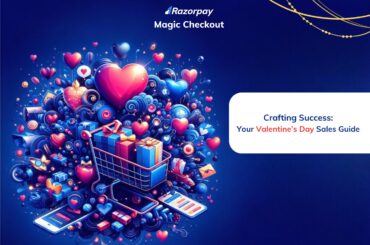One of the latest trends that have proven to become a big hit for bringing back customers is customer loyalty programs. Whether it’s Swiggy’s Super program or Zomato’s Gold program, they all have one thing in common– customers love them.
So, what is the secret to a successful loyalty program? How does a business come up with one?
Well, sit back and relax, for we’re here to brief you on the basics of customer loyalty programs and how to measure their effectiveness. Let’s begin!
What is a customer loyalty program?
Loyalty /?l???lti/
noun
A strong feeling of support or allegiance
Customer loyalty refers to the willingness of customers to purchase from or work with a brand that they prefer. This comes as a result of overall positive customer experience, satisfaction, and the value the customer obtains from the product.
The origin of loyalty programs dates back to the 1950s where grocers would provide rewards to their top customers. This practice was then widely adopted and implemented by the airline industry in the form of airline miles, which quickly grew to become one of the most successful loyalty programs.
A customer loyalty program helps boost interest by introducing incentives for the customer to make a buying decision. These incentives can be provided to the customer in many different ways, by both products and services.
Here are some common ways in which e-commerce businesses can offer rewards to their buyers:
- Discounts and rebates
- Rewards and promo codes
- Free merchandise
- Coupons
- Access to unreleased product features
Why do you need a customer loyalty program?
Customer loyalty programs can play a huge role in ensuring customer retention for your brand. Studies show that it costs 5x less to retain customers than acquire new ones and loyal customers spend up to 67% more than new customers.
Here’s how important it is to ensure customer loyalty– loyal customers often convert and spend more money with brands they like, with 78% of loyal customers willing to spread the word to their friends and family.
Effective e-commerce marketing over the years has taught us that nothing works like word-of-mouth recommendations, especially when it comes to an e-commerce website.
Here are some benefits of setting up a solid customer loyalty program for your e-commerce store:
- Ensuring shopper retention: As we mentioned earlier, customer retention is 5x cheaper than acquisition. With an airtight loyalty program, you can be sure to provide a reason for customers to keep coming back. Whether it’s a promo code or a cashback, it can play a big role in ensuring customer satisfaction.
- Helping acquire new customers: Although the main purpose of a loyalty program is to retain existing customers and increase repeat orders, referrals can work well for your brand. The next time you host a sale, remember to reward buyers who bring in their friends.
- Reducing churn: The churn rate, also known as the rate of attrition or customer churn, is the rate at which customers stop doing business with an entity. It is most commonly expressed as the percentage of service subscribers who discontinue their subscriptions within a given time period. Loyalty programs can help reduce churn rates greatly as customers keep coming back to do business with you.
- Segmentation of customers: Identifying high-value customers is one of the first steps to boosting your business. Whether it’s an existing customer or a new one, loyalty programs help you track what customers are purchasing, how much they’re buying and what you must do to keep them high.
- Increasing lifetime value: It’s a known fact that loyalty programs do boost purchases and increase the number of buyers on your e-commerce websites to an extent. Customer lifetime value is the total worth to a business of a customer over the whole period of their relationship. Thus, you can certainly expect CLTV to increase proportionally with the increase in the frequency of purchases.
- Saving marketing costs: Once you learn who your ideal customers are, you can better target your advertising to bring in more new customers who fit the profile of the best customer and replicate that model. These new customers are more likely to convert into repeat customers. This data can help you to cut down advertising costs by eliminating advertising in mediums that attract one-time buyers or deal-seekers.
- Staying ahead of the competition: A special discount or extra points for every purchase can mean a world of difference to a customer who is facing a dilemma between two brands. With customer-facing ideas like these, your competitors will have a tougher time luring your customers away from you.
- Identifying new brand ambassadors: Who better as an ambassador who loves your brand as much as you? Customer loyalty programs help you identify the creme de la creme of buyers who appreciate your services the most. One of the incentives of your loyalty program can be to feature your top fan as your ambassador, too!
Estimating the success of your loyalty program
For any marketing decision that you undertake for your e-commerce business, it’s important to measure the success of it. Measuring the effectiveness of the move can help you in replicating your success model and rectifying mistakes you may have made along the way.
Below are a few methods to know if you’re taking the right path for your business by offering such loyalty programs. These methods can be used as yardsticks to measure the performance of your product otherwise, too.
Track your customer retention rate
Customer retention rate is simply the percentage of customers who remain with you, relative to the number you had at the start of your period. Keep in mind, this does not count new customers.
By implementing a successful loyalty program, these numbers should increase. According to a study, increasing customer retention rates by 5% increases profits by 25% to 95%.
Keep an eye on your Net Promoter Score
Net Promoter Score (NPS) is one of the most popular ways to obtain feedback from your customers. This score refers to the likeliness of customers preferring your services or recommending your products. The scale usually ranges between 1-10 and is directly proportional to customer satisfaction.
Tip: NPS isn’t limited to e-commerce businesses and can be used to measure different kinds of feedback.
Churn rates
Customer churn refers to the number of customers that end their relationship with the brand, determined by a certain time period when a customer fails to interact with the business.
Churn can be due to bad service, lack of satisfaction or simply, boredom. The lesser the churn is, the more you can expect your business to succeed and make a lasting impact on the market.
Conclusion
There are no hard-and-fast rules to ensure 100% success, but there are many methods worth experimenting with, and loyalty programs are one of those. When it comes to profitability, we at Razorpay Thirdwatch, are keen on helping entrepreneurs and businesses scale their business and bring down losses.
This is merely the tip of the iceberg, check out how we are helping over 500+ Indian e-commerce businesses reduce their business costs by 40% with Artificial Intelligence and Machine Learning.





